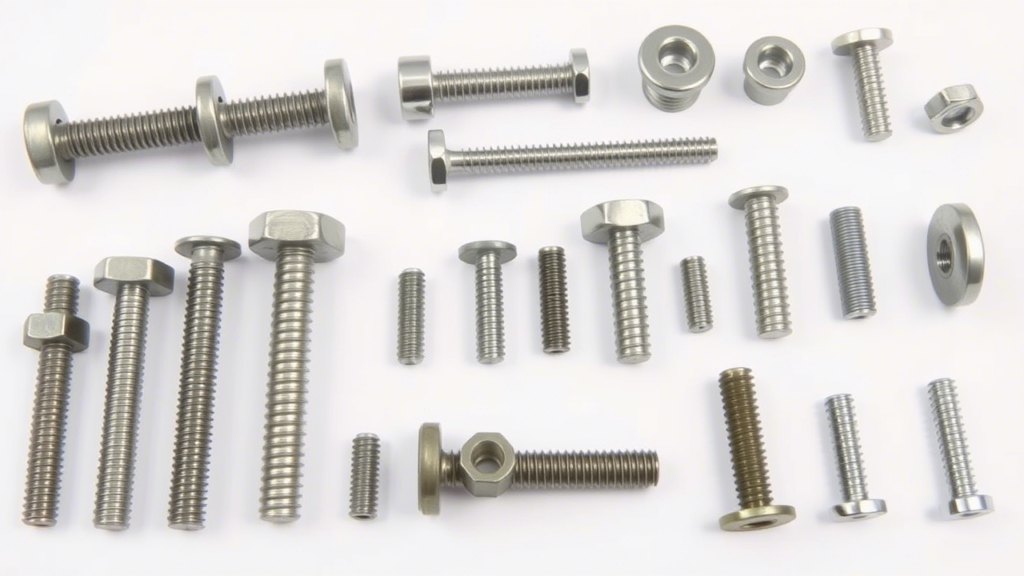Introduction
Furniture bolts are essential hardware components used in assembling and securing furniture pieces. They provide stability, durability, and ease of assembly, making them crucial for DIY projects and professional furniture making. In this guide, you will learn about different types of furniture bolts, their applications, installation techniques, and best practices for choosing the right ones.
Types of Furniture Bolts
1. Hex Bolts
Hex bolts are commonly used in furniture assembly due to their strong grip and ease of tightening. They require a wrench or socket to install.
2. Carriage Bolts
Carriage bolts have a rounded head and a square neck, preventing rotation when tightened. They are perfect for wooden furniture.
3. Connector Bolts
Connector bolts are ideal for flat-pack furniture, often used in combination with barrel nuts to create strong joints.
4. Allen Head Bolts
Also known as socket head bolts, these are tightened using an Allen wrench. They provide a sleek, flush finish.
5. Machine Bolts
Machine bolts are heavy-duty fasteners used for metal-to-metal or wood-to-metal connections.
6. Lag Bolts
Lag bolts, or lag screws, are designed for high-strength applications, typically in furniture that requires added durability.
7. Flange Bolts
Flange bolts have a built-in washer to distribute pressure evenly, reducing the risk of damage to furniture surfaces.
8. T-Bolts
T-bolts are commonly used in furniture tracks and rail systems, allowing for adjustable and secure connections.
How to Choose the Right Furniture Bolts
1. Consider the Material
Choose bolts based on whether you’re working with wood, metal, or composite furniture.
2. Check the Size and Length
Select bolts that are the right diameter and length to ensure a secure fit without protruding excessively.
3. Look for Corrosion Resistance
Opt for stainless steel or zinc-plated bolts for durability, especially for outdoor or humid environments.
4. Understand Load Capacity
Ensure the bolt can handle the weight and stress of your furniture piece.
5. Compatibility with Other Hardware
Ensure the bolt fits with nuts, washers, and other fastening components for a seamless assembly.
How to Install Furniture Bolts
1. Gather Your Tools
You’ll need a wrench, drill, screwdriver, and measuring tape.
2. Mark the Drilling Points
Use a pencil to mark where you need to drill holes for accurate placement.
3. Pre-Drill Holes (If Needed)
For wooden furniture, pre-drilling helps prevent splitting.
4. Insert the Bolt
Place the bolt through the hole and attach a nut or washer as needed.
5. Tighten Securely
Use a wrench or screwdriver to tighten the bolt without over-tightening, which can strip the threads.
6. Inspect and Adjust
Ensure all bolts are snug and check for stability before using the furniture.
Common Issues and Solutions
1. Loose Bolts
Use thread-locking adhesive or replace with a larger bolt.
2. Stripped Threads
Use a thread insert or replace the bolt and nut.
3. Misaligned Holes
Re-drill and realign holes for proper fit.
4. Rust and Corrosion
Opt for rust-resistant bolts and apply protective coatings.
Conclusion
Furniture bolts are an essential part of furniture assembly, ensuring durability and stability. By selecting the right type, properly installing them, and addressing common issues, you can ensure long-lasting and secure furniture connections.
FAQs
1. What are furniture bolts used for?
Furniture bolts are used to fasten furniture components securely, providing strength and stability.
2. How do I know which bolt to use for my furniture?
Consider the material, size, and load capacity when selecting a bolt.
3. Can I replace a missing furniture bolt with any bolt?
It’s best to use the same type and size to maintain structural integrity.
4. How do I prevent bolts from loosening over time?
Use thread-locking adhesive or lock washers to keep them secure.
5. Are stainless steel bolts better for furniture?
Yes, they are rust-resistant and highly durable.
6. Can I use furniture bolts for outdoor furniture?
Yes, but ensure they are weather-resistant, such as galvanized or stainless steel bolts.
7. How do I remove a stuck furniture bolt?
Apply lubricant, use a wrench for extra torque, or carefully tap it with a hammer.
8. What’s the difference between furniture bolts and screws?
Bolts require a nut for fastening, while screws thread directly into the material.

